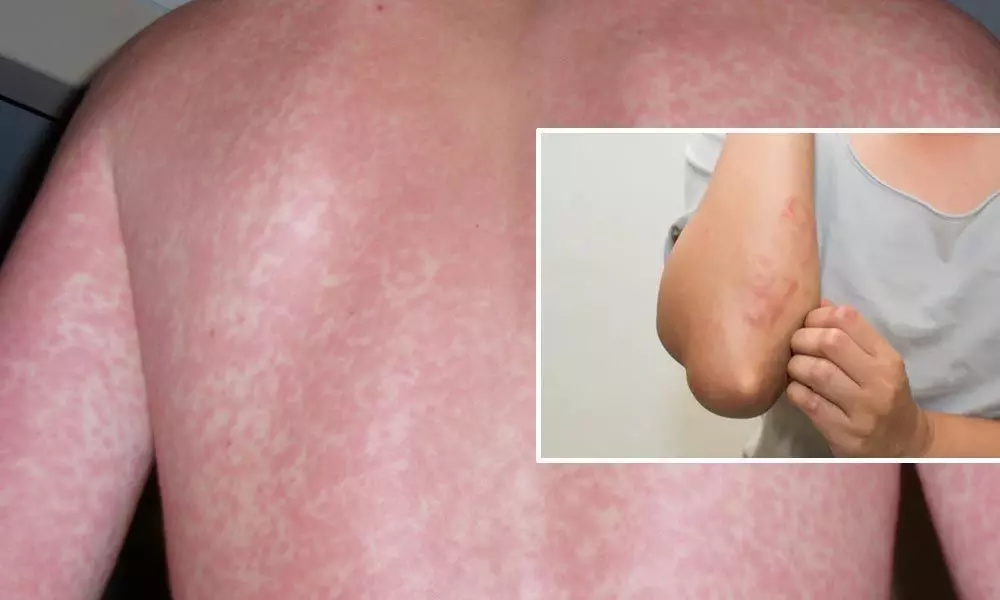What is a Viral rash? And when to see a Doctor?

It's that time of the year again. The heavens open up, it pours and pours, and the weather changes dramatically. What's even more common though is how everyone's health from the classroom to boardroom suddenly takes a hit.
It's that time of the year again. The heavens open up, it pours and pours, and the weather changes dramatically. What's even more common though is how everyone's health from the classroom to boardroom suddenly takes a hit.
Viral infections are illnesses caused by a virus rather than bacteria or fungi. Many viral infections, especially those that tend to affect toddlers and children, can cause skin rashes. While they can look alarming, they usually don't cause for concern, and they disappear once the infection clears up.
Read on to learn more about the symptoms of a viral rash, including when you should see your doctor.
How to identify a viral rash
The characteristics of viral rashes can vary greatly. However, most look like splotchy red spots. These spots might come on suddenly or appear gradually over several days. They can also appear in a small section or cover multiple areas. For example, a measles-related rash starts on your cheeks before eventually spreading to your torso and limbs.
Viral rashes might also feel itchy or painful to the touch. The best way to identify a viral rash is to check for any symptoms of a viral infection, such as:
fever
chills
body aches
fatigue
What causes a viral rash?
Viral rashes are caused by either an immune response to the virus or damage to skin cells from the virus.
In the case of measles, for example, your immune system detects the virus as it travels through your bloodstream. Immune cells then release chemicals to destroy the virus. However, these chemicals also cause skin inflammation, resulting in a rash.
Shingles, on the other hand, involves a reactivation of chickenpox virus lying dormant in your nerves. When the virus reactivates, it travels down your nerves to your skin. As the virus replicates there, the shingles rash begins to form.
Other viral infections that can cause rashes to include:
rubella
chickenpox
mononucleosis
roseola
hand, foot, and mouth disease
fifth disease
Zika virus
West Nile virus
dengue fever
Are they contagious?
Viral rashes aren't contagious but the viruses that cause them usually are. Some of the most contagious viral infections that cause a rash include:
measles
chickenpox
rubella
These infections are usually spread through respiratory droplets in the air or direct contact with nose or throat secretions. People with this kind of viral infection can be contagious before the rash appears. For example, people with rubella may be contagious for a full week before they develop a rash. They'll usually continue to be contagious for another week after the rash appears.
Some other viral infections are spread by insects such as mosquitos, ticks, and fleas. Examples of these viruses include the Zika virus and West Nile virus.
How are they treated?
Viral infections often have to run their course. Unlike bacterial infections, they don't respond to antibiotics, so treatment usually focuses on relieving symptoms.
You can try to speed up the healing process by drinking lots of fluids and allowing your body plenty of rest. If you have a fever or body aches, you can take medications such as acetaminophen (Tylenol) or nonsteroidal anti-inflammatories such as ibuprofen (Advil).
If you have an itchy viral rash, you can try applying a cool compress or calamine lotion to the affected area. Try to avoid scratching it if you can.
For some viral infections, such as shingles, your doctor might prescribe an antiviral medication.
When to see a doctor
While it's always a good idea to see your doctor when you notice a new rash, you should make an appointment if you have a rash that:
lasts longer than a week, especially if it doesn't seem to be improving
starts to blister
spreads rapidly or is all over your body
shows signs of redness, swelling, and oozing
is painful
The bottom line
Many viral infections can cause a skin rash. While the rash itself isn't contagious, the underling viral infection often is. Most viral infections clear up on their own, but some may require antiviral medication. Contact your doctor if the rash doesn't seem to be getting any better after a week.
You should also see your doctor if you have a rash and live in or have recently visited a tropical or subtropical climate. Illnesses spread by insects tend to be more common in these areas and may require antiviral medication.
















